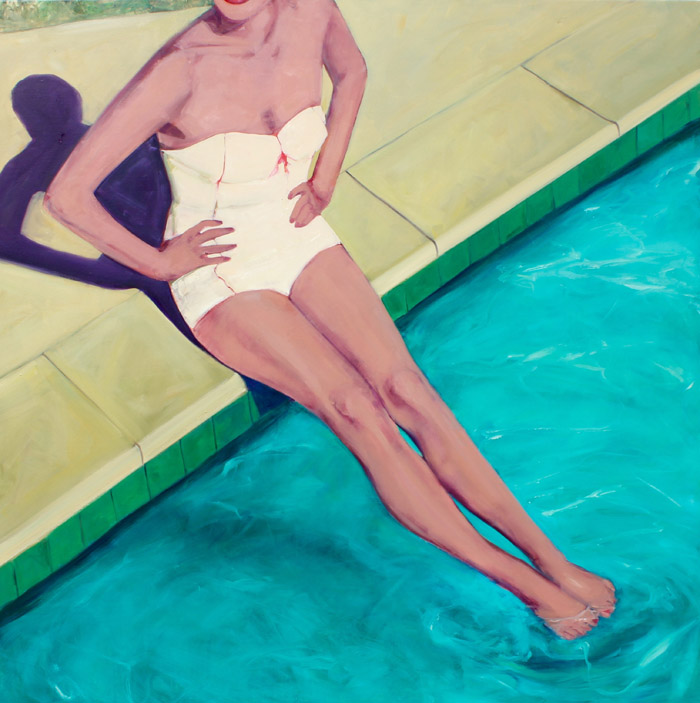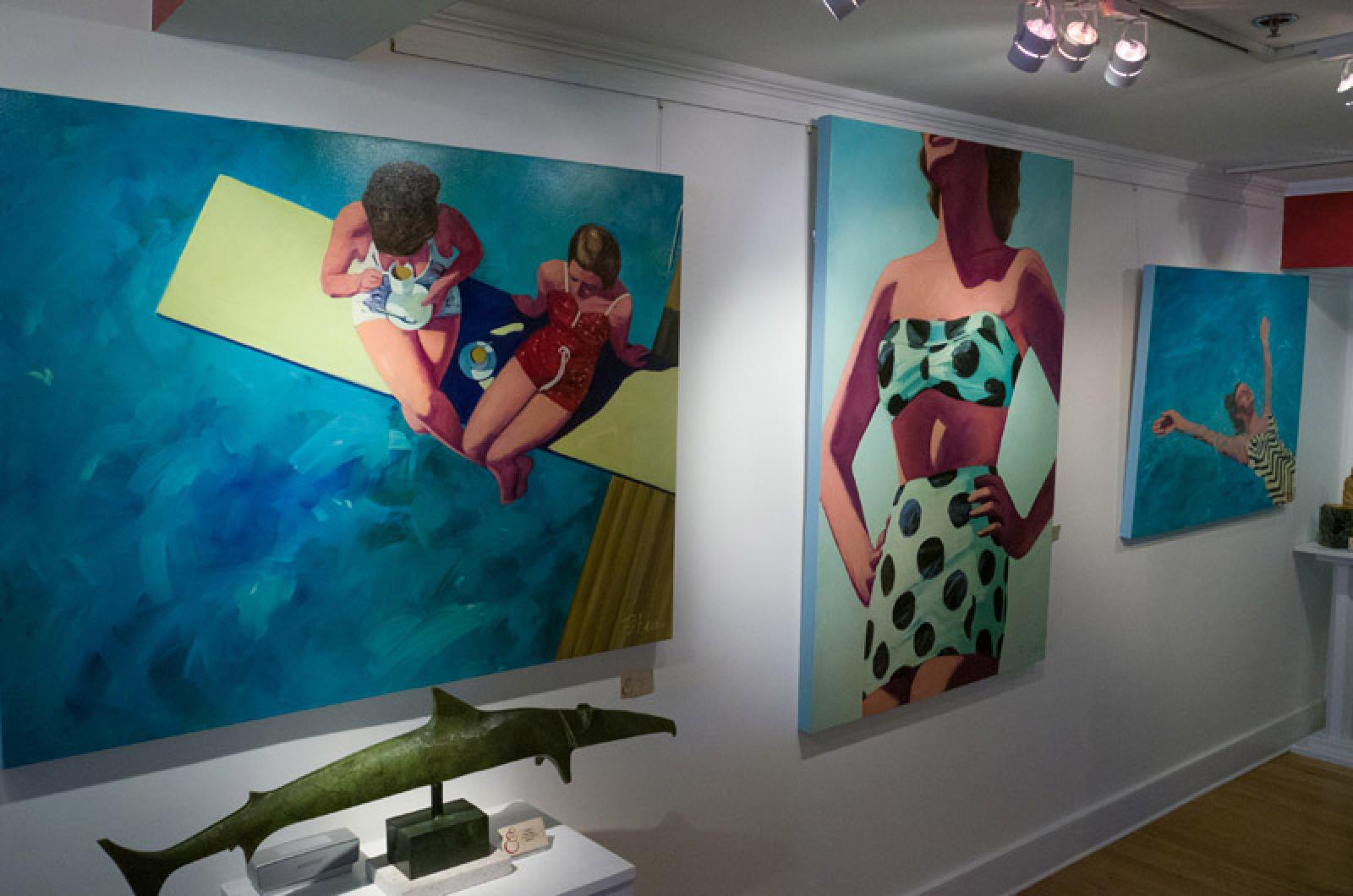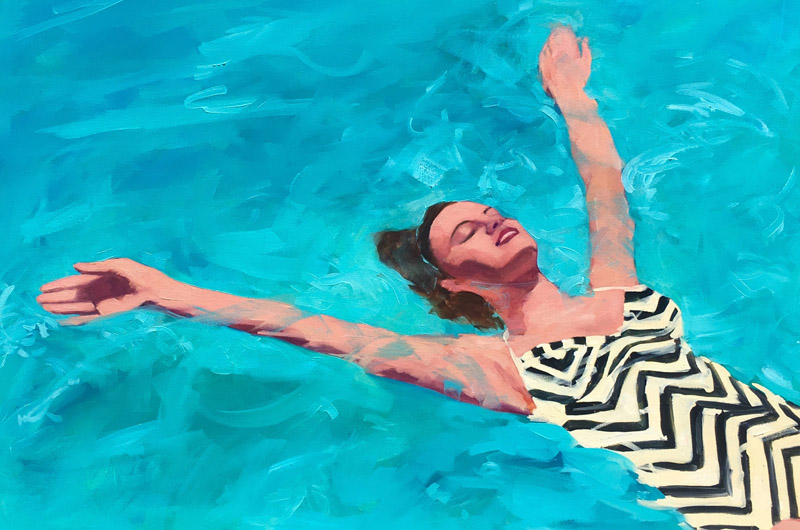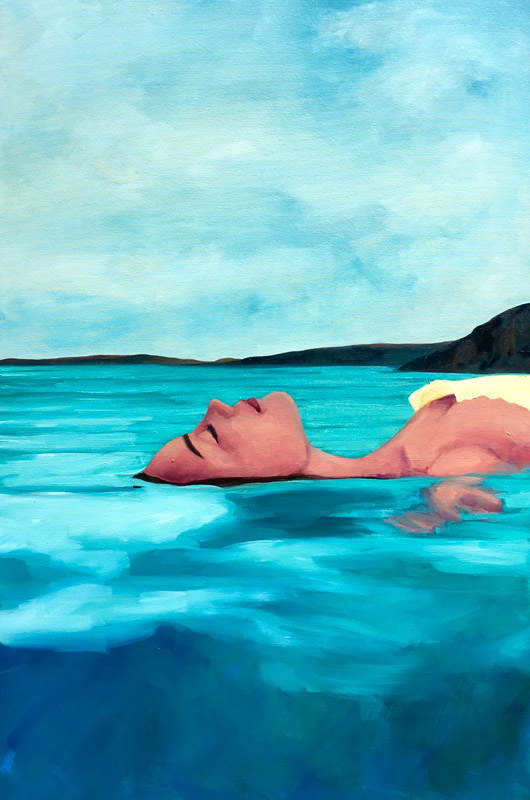When Tracey Sylvester Harris was nine years old, she put her feet in the water of a pool and began drawing. She sketched her knobby knees, the ripples in the water as she swished her toes, and the way the light bounced off the little waves. Ms. Harris was not particularly proud of the piece, but her mother was and so she kept it. She also never stopped painting.
After college, Ms. Harris spent years painting different urban scenes, always including people somewhere in her paintings. Her art was hung in galleries from Los Angeles to New York, and many places in between. She was successful, but began to grow detached from the urban subject matter she painted on small canvases.
When she decided to try something different, she purchased the canvases first. They were large, bold canvases that would allow her to be imaginative. Next, she shifted her gaze back to the water to get in touch with the distortions and light that had struck her as a young girl. When Ms. Harris was on Pinterest searching for a model of beach sand, she stumbled across a black and white photograph from the 1940s. It showed a young woman basking in the sun on a beach.
During a recent phone call from her studio in San Luis Obispo, Calif., Ms. Harris described her discovery of that picture: “I immediately went, oh my gosh, I love that!”
And so began a new artistic style that resulted in a painting series called “Sunshine Noir.” Ms. Harris looked through old magazines, books and the internet for her subject matter. She used, almost exclusively, photographs of young women from the 1940s, 50s and 60s doing leisurely activities at the sea or poolside. The artist snipped and folded back the pictures, and blew them up to fit her large canvases. She added color and decided against painting complete figures.
Ms. Harris said that she wishes to give the viewer access to figures in the past. “When it’s that close and cropped, we can all relate,” she said. “Our time, our parents before us, our kids after it.”
Her paintings have since been featured in art galleries, books, magazine covers and the film The Face of Love starring Ed Harris (no relation).
In California her workspace includes two rooms, her office and a studio filled with cut up photographs, paints and canvases. She paints in layers, and often works on two, three or four paintings at a time. She paints Monday through Saturday.
“It’s a lot of work, but it’s also kind of wonderful.”

Though she is a paintaholic, Ms. Harris’s social life has never suffered, in part because instead of meeting up with friends for trips to the mall or beach, she asks them to pose as her subjects. They pose by their pools, like the 1950s girls in the photographs. However, instead of looking directly at her as the old subjects would have done with a cameraman, Ms. Harris has her friends candidly pose in order to fit her exact vision. She is very particular.
“One of my greatest gifts is in composition and balance,” she said.
Her current exhibition is called Dive In and features peaceful moments of serenity and joy, leaving the viewer with a slight feeling of bittersweet nostalgia. Ms. Harris proudly calls herself a “contemporary girl,” which is reflected in her paintings.
“I think that was the challenge, to have them feel contemporary . . . it gives them an edgy feel.”
The opening reception for Tracey Harris and the Dive In exhibit will take place on Saturday, June 25, from 6 to 8 p.m. at the Eisenhauer Gallery, located at 38 North Water street in Edgartown. The group show also features artists Debbie Miller, Robert Roth, Paul Norwood, T.S. Harris and Fred Calleri.








Comments
Comment policy »